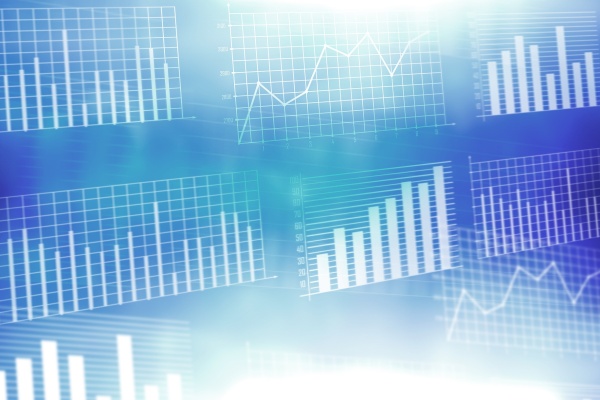Simon Runc, principal visual analyst at Atheon Analytics outlines why instead of wasting hours of the day trying to make data more understandable, businesses can harness the power of visual analytics to transform the way in which data is understood and ultimately used to support key business decisions.
Maximising the value from data is a key business goal but what does that mean in practice?
With the growth of accessible visual data analytics tools, the onus is on business users to generate their own insight.
As a result, too many individuals waste hours of their day in the hope of making data more understandable. Rather than achieving intelligent, meaningful business insight, for many highly experienced business users, data has become a burden.
This has to change – and a growing number of organisations now recognise the importance of visual analytics specialists; experts in both data analytics and the science of data visualisation.
They understand that creating the ‘right’ visual depends on the question being asked – not a random decision to use the chart wizard to add colour.
With the right approach, visual analytics can transform the way data is understood and used to support business decisions.
Insight gap
The volume of data collected and stored by businesses is expanding exponentially, yet its value often remains untapped.
Despite so many data analytics tools available, it is surprisingly difficult to find one that is simple and intuitive to use and presents information with clarity, accuracy and certainty.
Placing the burden of data manipulation on business users is a mistake; users should be exploring, analysing and utilising data – not wasting time wrestling it into submission.
So how can companies unlock the value of their data? The key is to understand the importance of visual data presentation.
Around 70% of sense receptors in the body are dedicated to vision and a large amount of the brain is dedicated to processing these signals.
In practice this means most people struggle to read, retain and compare more than five discrete numbers – so remembering the sales trend over six quarters will be a challenge, for example. But present that same information visually, and most of us can not only immediately spot the trends and differences, but also retain the detail.
This is only true, however, if the correct visual models are applied. For example, we humans are better at comparing lengths than areas, angles and arcs.
Market share comparisons, for example, work far better in a bar chart than a pie chart; using the pie chart below can you tell whether Company C or Company D has a larger market share?

Compare the same information in a bar chart; how much easier is it to answer the same question now?

Presenting information in a way that supports decision-making takes the burden away from business users; let the data experts undertake complex analytics and enable the domain experts to explore that insight to make better decisions.
Visual presentation
Creating the right visual presentation of data requires an understanding of the way information is consumed.
According to behavioural psychologist Daniel Kahneman, there are two types of thinking: Instinctive (or Type 1) activities are automatic; whereas, Finite (or Type 2) thinking requires conscious effort.
Traditional reporting and analytics require Type 2 thinking, whereas our goal with effective data visualisation is to provide data that can be intuitively consumed (Type 1).
This frees up the reader to apply their Type 2 thinking to finding a solution rather than wrestling with the data to discover the problem.
For example, if an individual can understand trends in brand performance at a glance, they will have the time and capacity to explore those trends in greater depth.
If you quickly understand what is happening, you can spend more time figuring why it is happening.
If sales are down in one quarter, a merchandiser can immediately explore performance week by week.
It may be tough to understand and compare 13 weeks’ data just by looking at tables of numbers, yet in a well-presented visual format, such as a line chart, the trends are immediately obvious.
If the information is presented in the right way, an individual can look at performance over an entire year and gain immediate business insight. With the ability to directly interact with data in this way, individuals can rapidly explore and better understand their business.
Visual expertise
Expertise in data visualisation is critical to deliver value. Just as market share comparisons work better in a bar chart than a pie chart, neither of these models provides an easy view of performance over time and a different approach is needed.
Using pie charts, it is very difficult to see the trend:

It is only a little better in bar charts, because this requires us to remember and compare bar length – and that is a struggle.

In this situation, a line chart is far clearer, tapping into our ability to automatically process position:

Conclusion
Subject matter experts need clear, intuitive insight on-demand in order to make informed decisions and improve business performance.
Expecting these individuals to spend hours gathering and manipulating data, however, is a flawed approach.
Visual analytics is an incredibly powerful combination of data science, the appropriate methodology for creating the best visuals, and user-friendly, interactive presentation of those visuals.
The goal is so much more than simple reporting: it is true interaction with data, at speed, that encourages domain experts to explore their data in appropriate detail.
Understanding the science behind data visualisation is critical and tools built from this foundation give individuals the ability and time to easily explore and interact with their data.
Combining the best available tools and technology with the science of data visualisation allows organisations and individuals to unlock the value within their data, to make complex decisions with confidence.


